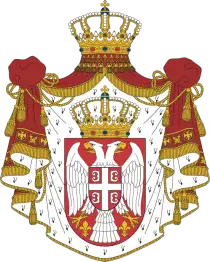Located in southeastern Europe, Serbia offers many attractions for tourists.
- Belgrade – The capital of Serbia, Belgrade, is a dynamic city with a rich history and vibrant cultural scene. Highlights include Kalemegdan Fortress with its panoramic views, the Old Town with narrow streets, and modern districts full of restaurants, bars, and shops. Belgrade is also known for its numerous museums, including the National Museum and the Museum of Tito.
- Novi Sad – The second-largest city in Serbia, Novi Sad is famous for the annual EXIT Festival, one of Europe’s premier music festivals. The city is also home to beautiful landmarks, such as Petrovaradin Fortress, and a charming Old Town.
- Subotica – This picturesque city in northern Serbia, near the Hungarian border, is one of the most important towns in Vojvodina and offers numerous tourist and cultural attractions.
Odkryj najlepsze loty do blisko sto miast na różnych kontynentach. Sprawdź aktualne ceny i promocje.
Sprawdź loty do blisko sto miast na różnych kontynentachThe Double-Headed Eagle
The double-headed eagle originates from Byzantium – the Eastern Roman Empire used it as a symbol of a single imperial authority ruling over two spheres of influence: East and West, as well as the unity of Church and State. This emblem became a mark of imperial authority.
The Serbs adopted this symbol in the Middle Ages, particularly under the Nemanjić dynasty (13th–14th centuries). They used it to emphasize their independence and continuity with the Byzantine imperial tradition, especially after Stefan Dušan was crowned Emperor of the Serbs and Greeks in 1346.
The double-headed eagle is one of the most majestic and historically loaded heraldic symbols in Europe. In the case of Serbia, it is not only a symbol of power but also a strong reference to the imperial Byzantine tradition, which the Serbs frequently invoked since the Middle Ages.
In the modern Serbian coat of arms:
- On the eagle’s chest is a red shield with a white cross and four stylized S letters (C) – an old Serbian national symbol: “Само слога Србина спасава” (“Only unity saves the Serb”).
- Above the eagle is a royal crown (symbolizing monarchy).
- At the tips of the eagle’s tail are two golden lilies, symbolizing monarchical purity and connection with European heraldry.
Other places where the double-headed eagle appears:
- Byzantium – the original, a golden eagle on a purple background.
- Holy Roman Empire – from the 13th century, often a black eagle on a golden background.
- Russia – since Ivan III, who married a Byzantine princess; remains a symbol of Russia today.
- Albania – black double-headed eagle on a red background (symbol of independence and Skanderbeg).
- Montenegro – also a double-headed eagle, similar to Russia’s, with the Petrović-Njegoš dynasty coat of arms on its chest.
- Coat of arms of Schleswig-Holstein municipality
Onions in Serbian Culture – Why Are They So Important?
In Serbia, onions are treated almost with reverence, and the fact that you might receive raw, chopped onions with your meal is no coincidence – it’s a part of local culinary tradition, deeply rooted in folk mentality.
“Onion is medicine” – folk wisdom
In Serbian folk tradition, onions were (and still are) considered a natural remedy – for everything: colds, parasites, weakness, digestive problems. Like garlic in Romania, onions are not just a food ingredient but a way to survive.
Onion as “the poor man’s bread”
In times of poverty and rural life, especially in the 19th–20th centuries, people ate onions with bread and salt as a basic meal. Even today, older Serbs say:
“Ako nemaš ništa drugo – hleb, so i luk” – “If you have nothing else – bread, salt, and onion.”
Onion as the inseparable companion to meat
In Serbia, meat (grilled, stewed, or roasted) needs contrast – that’s why raw onions are served, to cut through the richness. It’s not about delicate flavors, but honest, sharp taste. That’s why you get plenty of it.
Symbol of masculinity and strength
In folk culture, onions (like rakija) were seen as “food for the real man” – simple, strong, unpretentious. There was no place for “carrot salads” – only luk (onion), preferably with roasted meat and homemade bread.
In language and proverbs
- “Bez luka i bez brata se ne ide na put” – Don’t set out on a journey without onion and a brother.
- “On jede luk kao jabuku” – He eats onions like an apple (referring to a tough or simple man).




